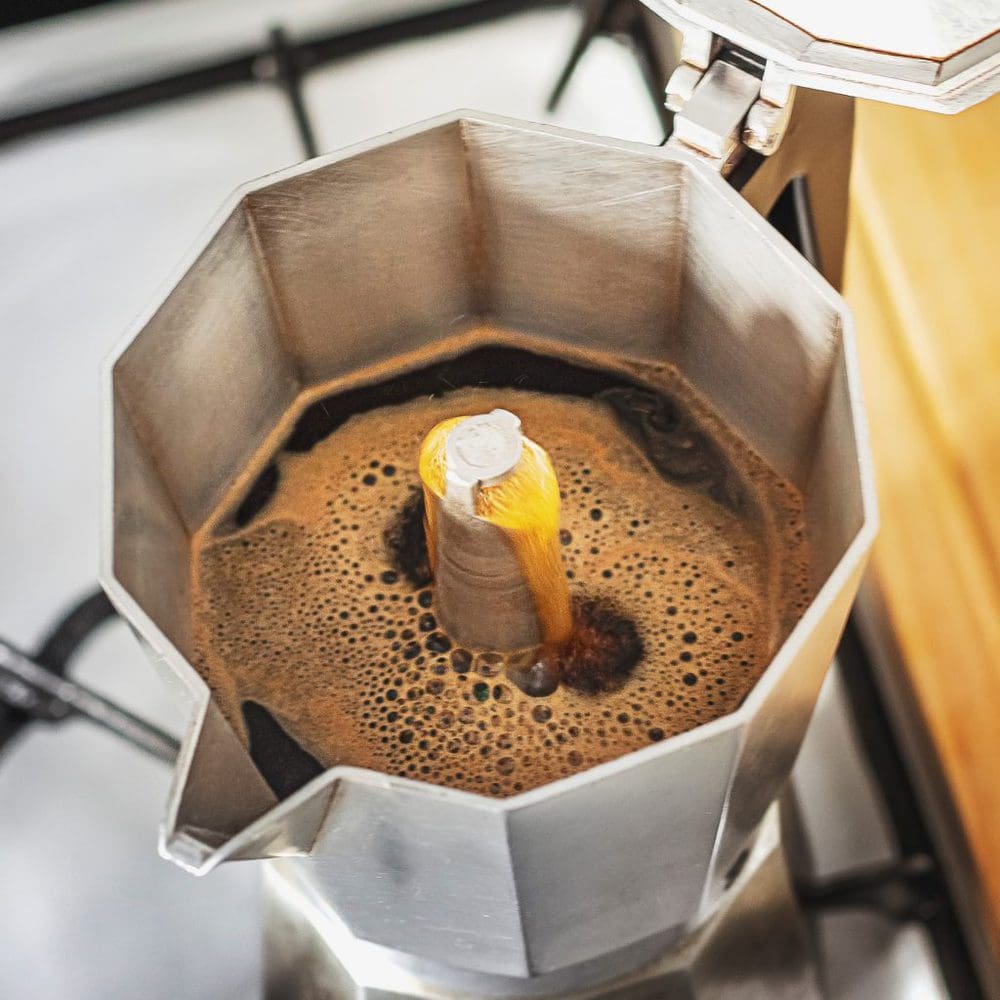Myths about espresso aren’t a few, but the most common ones are incredibly prevalent.
According to Michael Pollan, coffee woke us up from the Dark Ages. And to some extent, Steven Johnson talked about it earlier, when he explained in his TED Talk the importance of coffee houses for innovation.
In this regard, espresso is a paradox. It’s the most fascinating achievement of art and science in the coffee world. But, like most things coffee, is full of dogmas, myths, and misinformation of all kinds.
Keep reading and gather some material to annoy your fellow coffee geeks!
Myth #1: The best espresso shot takes 25 seconds

Taking care of time instead of dosing, yield, and strength is putting the cart before the horse. Actually, a good espresso shot can take between 22 seconds and 40 seconds according to Barista Hustle.
As James Hoffmann explains succinctly, time is a result of your espresso recipe, not a variable that you can manipulate directly like dosing, grind size, pressure, and water temperature. And I would add, is the less important result in comparison to taste and aroma.
If you think I am being too blunt, let’s put it on balance. “Time is the least important variable in any espresso recipe, but it can still make or break an espresso”, according to Barista Hustle.
Myth #2: Espresso has more caffeine than filter coffee
A drop of espresso is more concentrated than a drop of filter coffee. However, we take a lot more caffeine in a 12 oz mug of drip coffee than in a double espresso shot.
Surprisingly, cold brew tends to have a pretty high caffeine content due to its long and slow extraction process.
Myth #3: Espresso is a type of coffee bean
When roasters blend together different kinds of coffee beans, they create signature blends that are meant for espresso. These aren’t better than the other types; you can use them to make both filter coffee and espresso!
Myth #4: Espresso is a roasting degree
It’s more common now to find baristas making espressos with medium roasts. Previously, dark roasts were quite common, and many people thought that dark oily beans were the best for espresso.
Although I strongly disagree with that opinion, this is not the point. In short, you can choose your favorite roasting degree for it.
Myth #5: Espresso is bad for you
Most health-promoting properties in coffee are better in an espresso shot. Antioxidant content, for instance, is second to none.
Espresso has five times more antioxidants than filter coffee and red wine and almost ten times more than green tea.
So, unless you abuse it, espresso can be great for you.
Myth #6: The higher pressure the better

Since Giovanni Achille Gaggia patented his machine in 1947, espresso changed forever. Crema appeared for the first time on top of an espresso. Even more important than that, it was the first time someone could taste espresso as we know it.
After decades, 9 bars is still the standard for espresso machines. A few models can offer higher pressure, but they haven’t shown any significant advantage.
On the contrary, the humble Moka pot and Aeropress are far below with less than 2 bars.
Bear in mind that extraction is the most important result you get through pressure when making an espresso. This determines the taste, aroma, and body of your coffee.
Myth #7: Crema is very important

Crema is the most overrated thing about espresso. Well, perhaps only second to the 25 seconds “golden rule.”
I can agree about the aesthetic value of crema. Moreover, it’s crucial for latte art. But, in terms of taste and aroma, crema isn’t that important.
Furthermore, as strange as it seems, some coffee experts recommend scraping crema off espresso. Their logic is simple, crema has an intense taste that many people can find unpleasant.
Myth #8: You can make espresso without an espresso machine

Naming the Moka pot as a stove-top espresso maker is a good marketing stunt. However, is pretty easy to tell the difference between Moka pot coffee and espresso.
A proper espresso is very concentrated, dense, with a thin layer of crema on top of it. Moka pot coffee, although bolder than most drip coffee, is very different.
The Aeropress can make fairly strong brews too, but it lacks the pressure to dial an espresso. To some extent, the new devices (like Wacaco or the Cafflano Kompreso) that can deliver 9 bars can be called handheld espresso makers. However, I wouldn’t dare to say that you can make espresso without an espresso machine.
Myth #9: You need a high-end espresso machine to pull a good shot

You can find espresso machines for less than a 300$ and beyond $5000. It’s hard to say there isn’t any difference between them, but you don’t need a Ferrari-like espresso machine to dial a good shot.
Curiously enough, a good grinder is a lot more important for making a good espresso.
Did I miss a good myth?
If you know of another myth about espresso that’s worth debunking, please tell me in the comments section below and I will look for some evidence against it.


